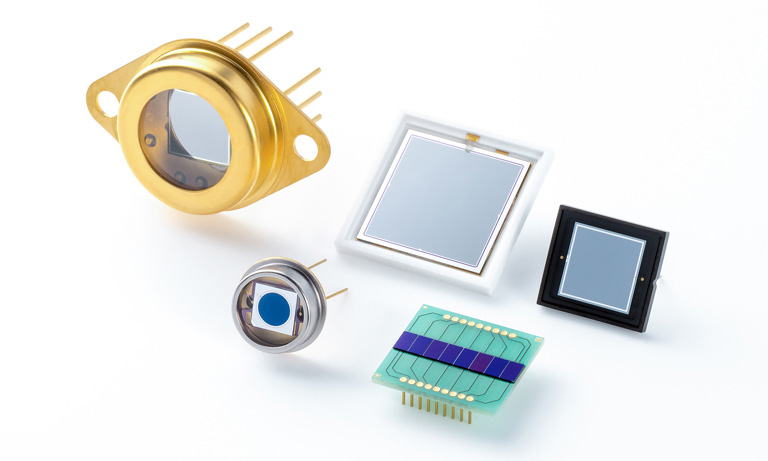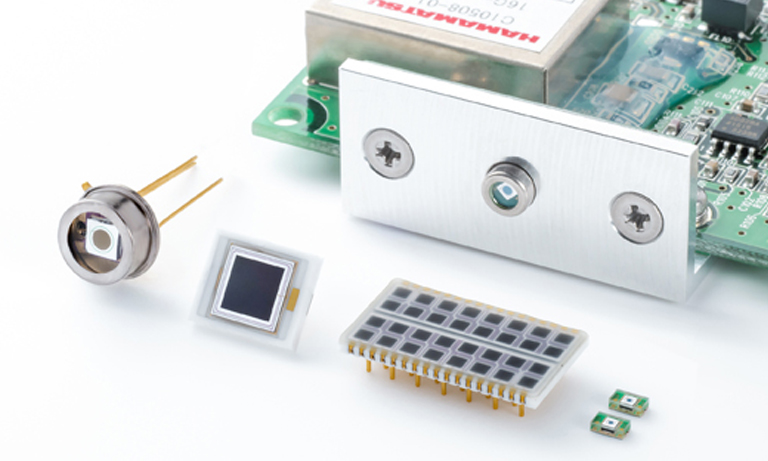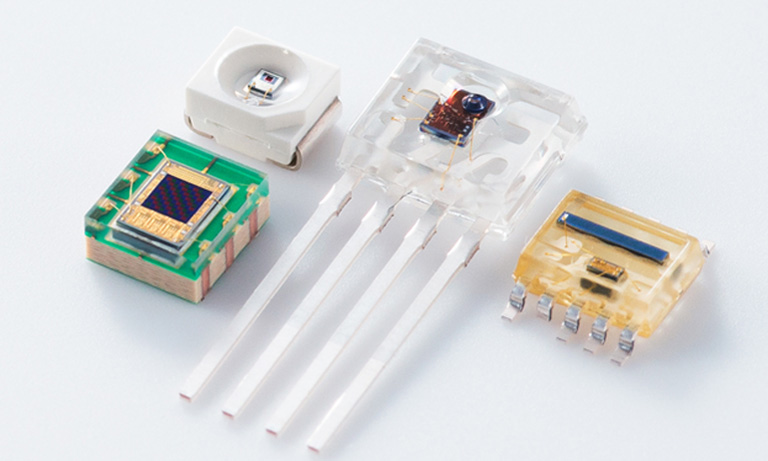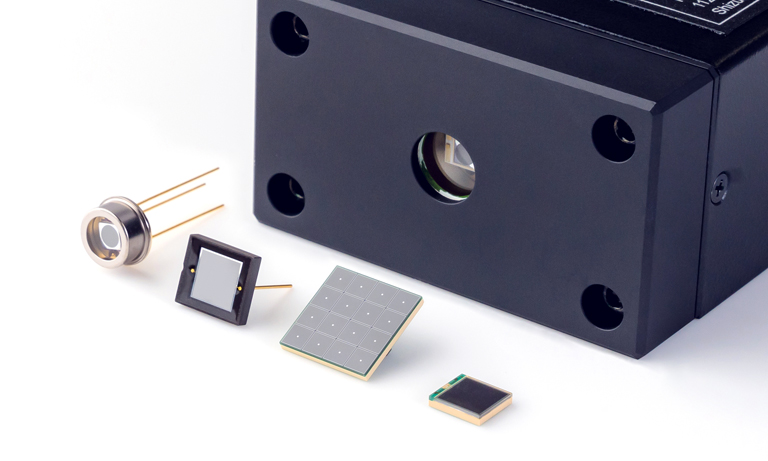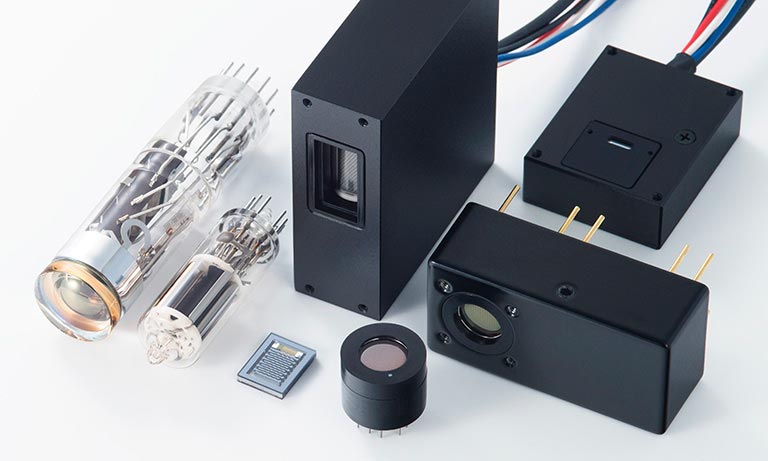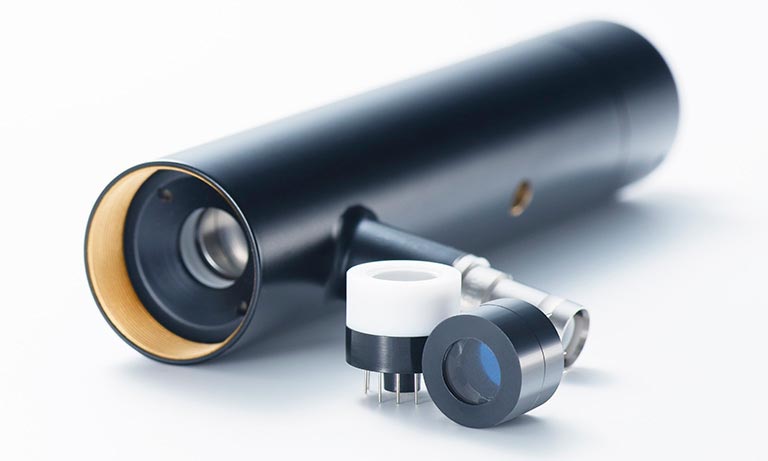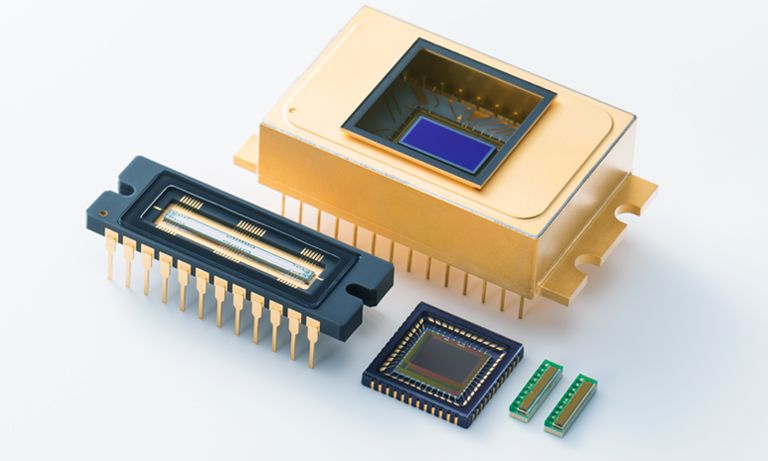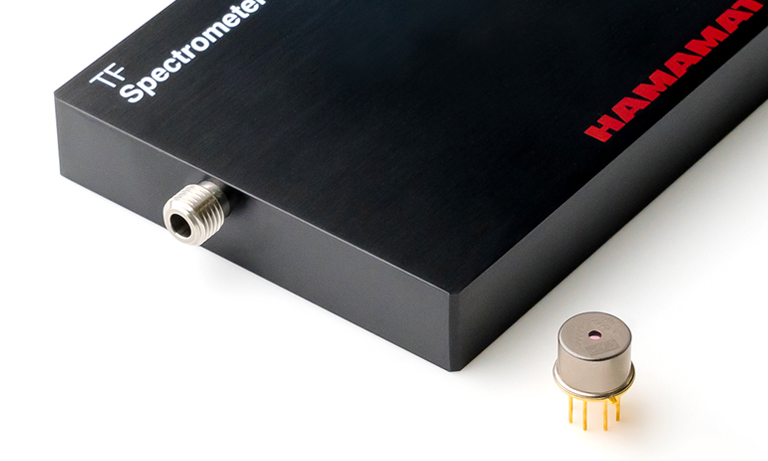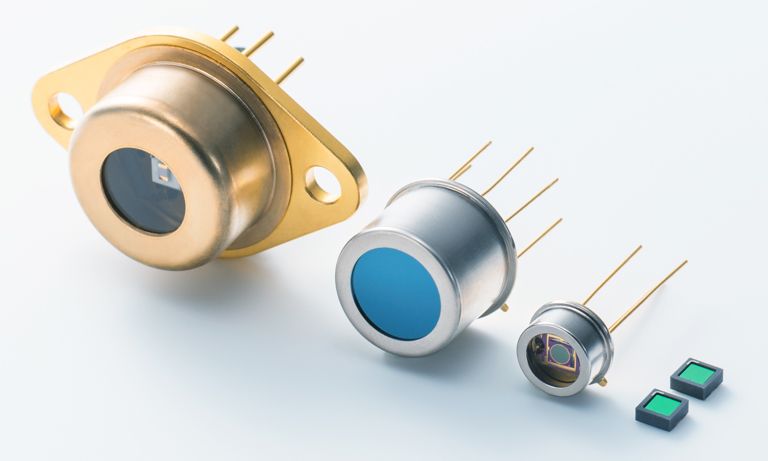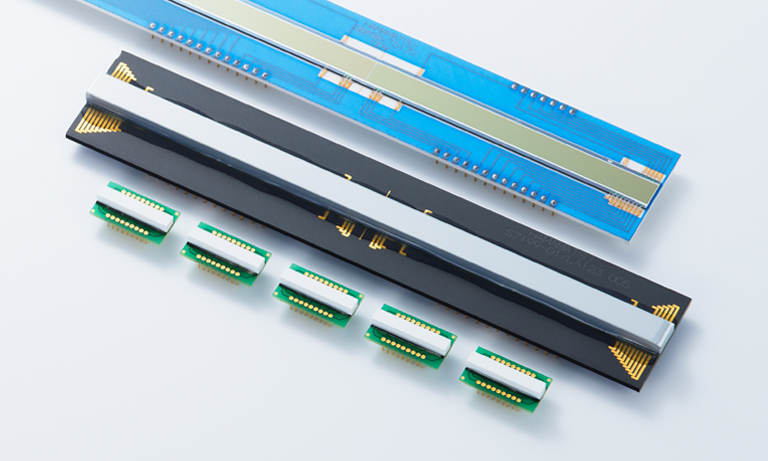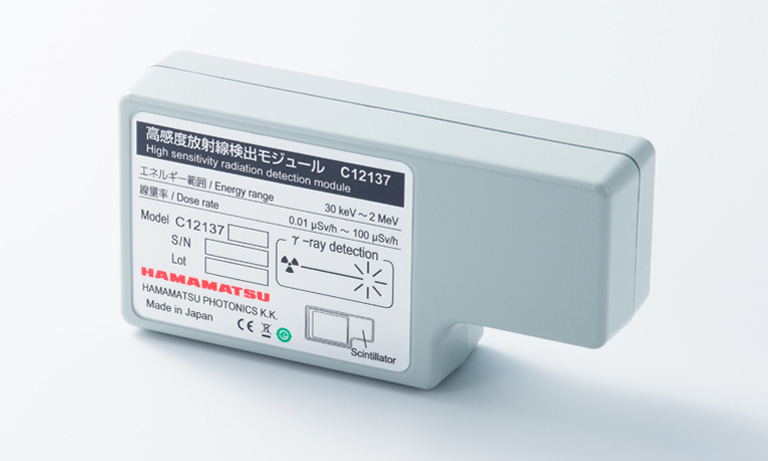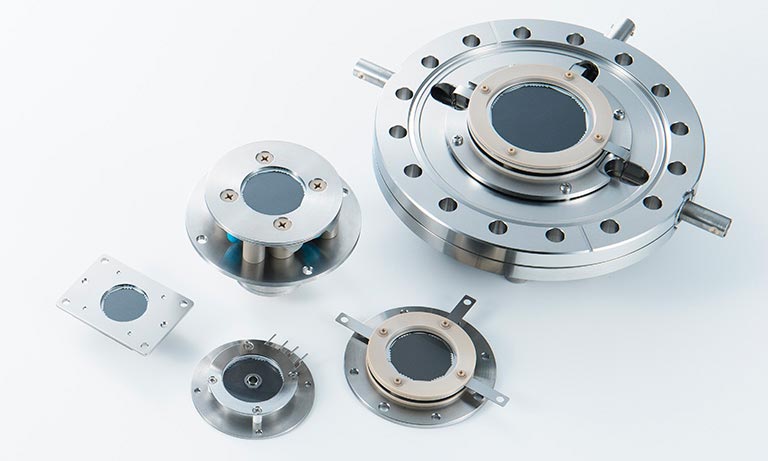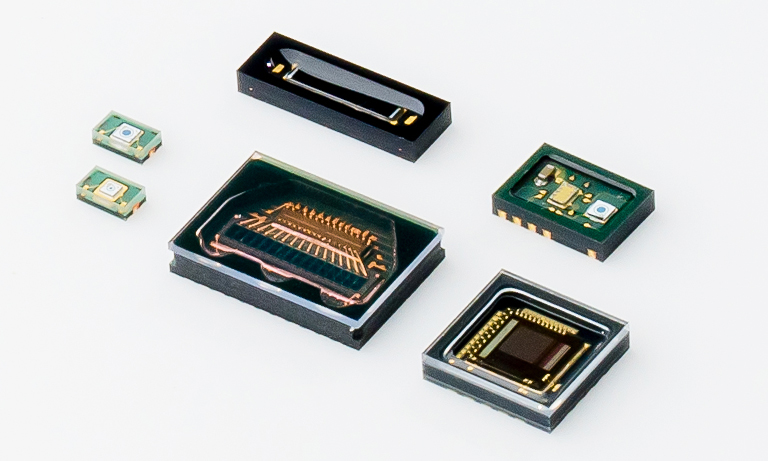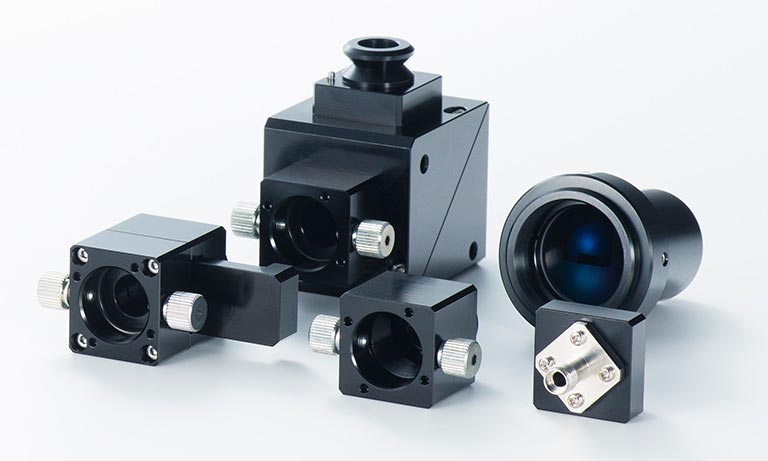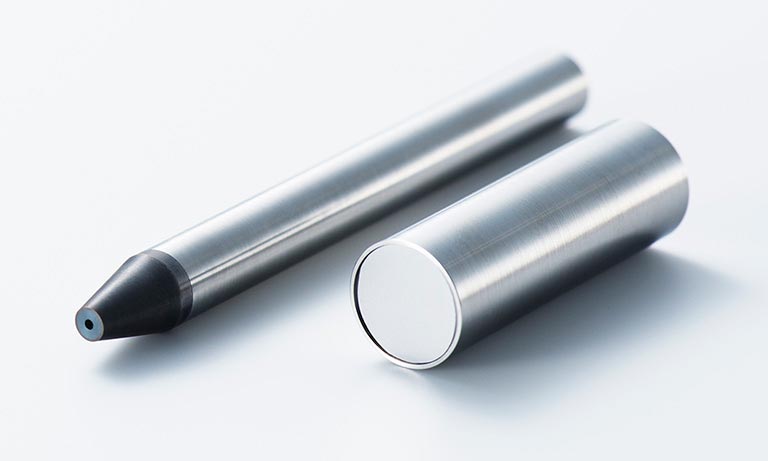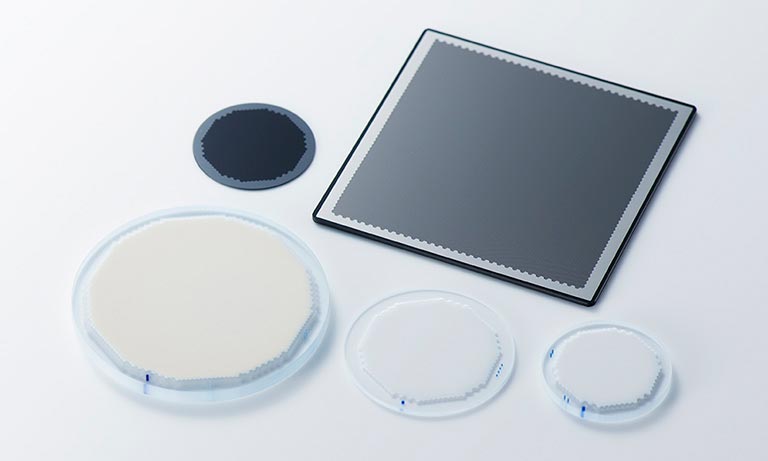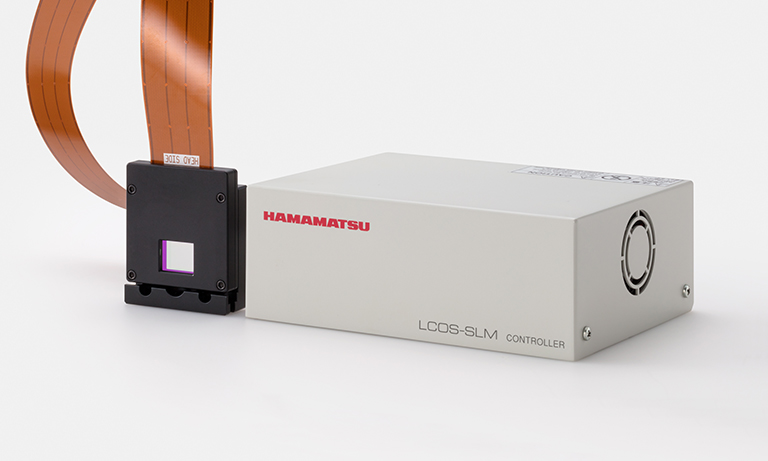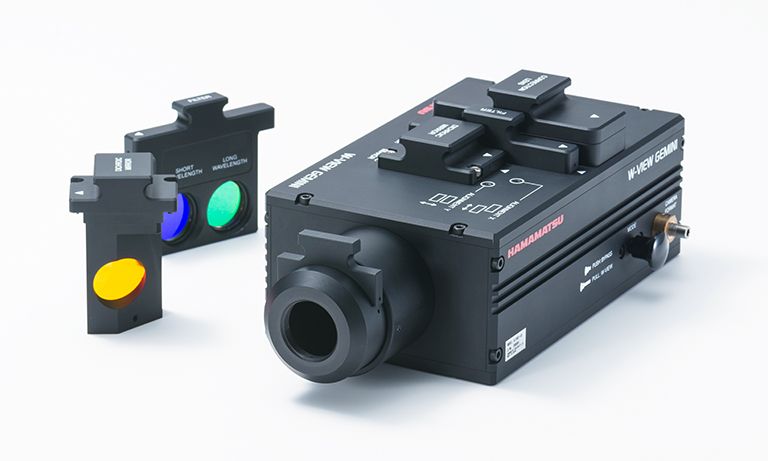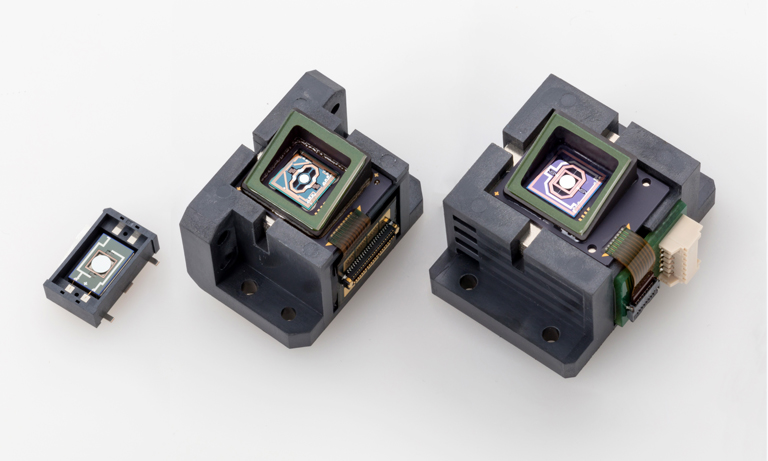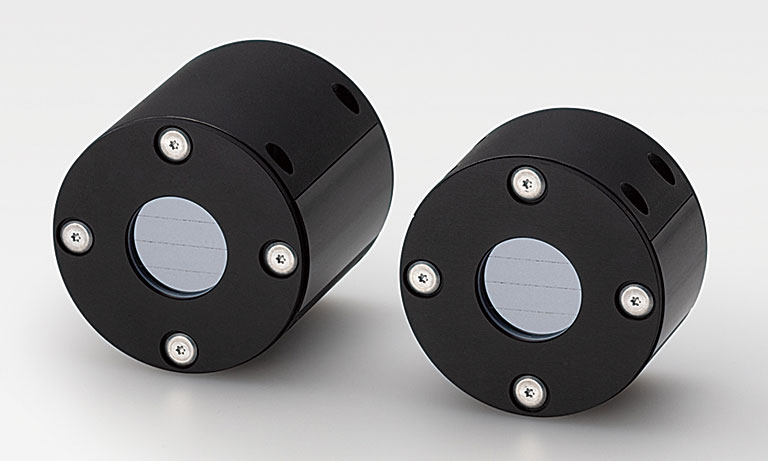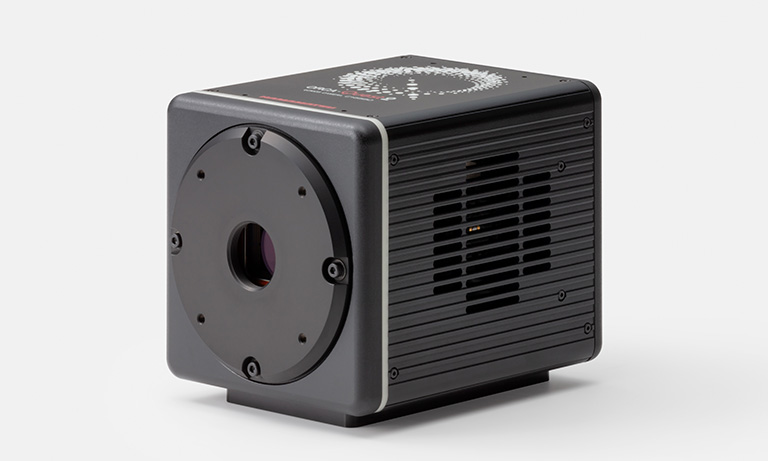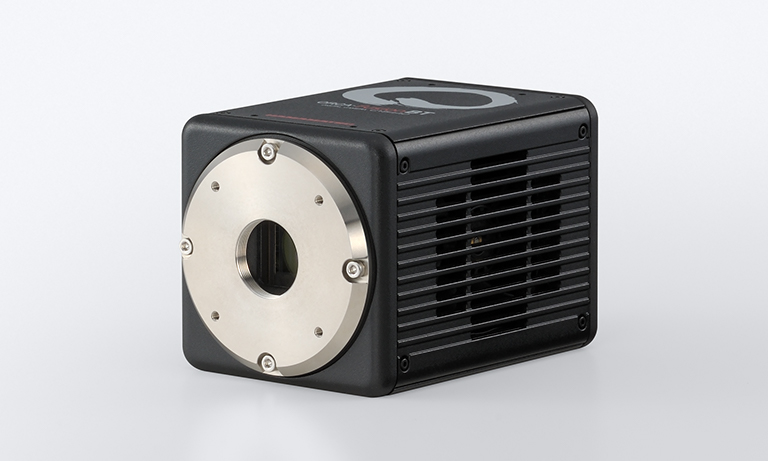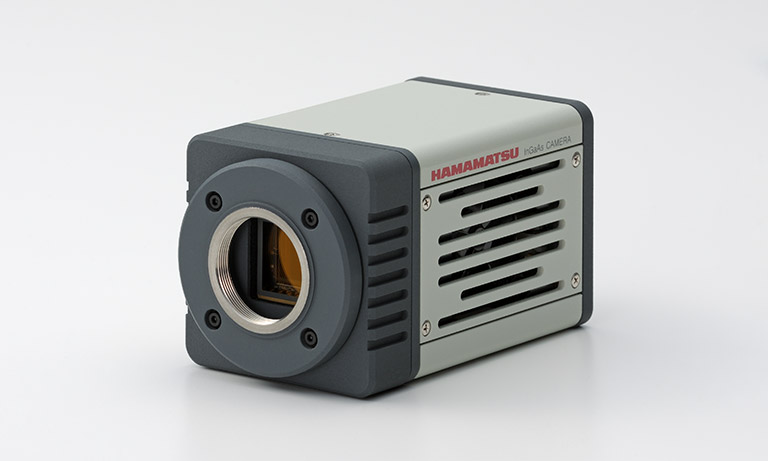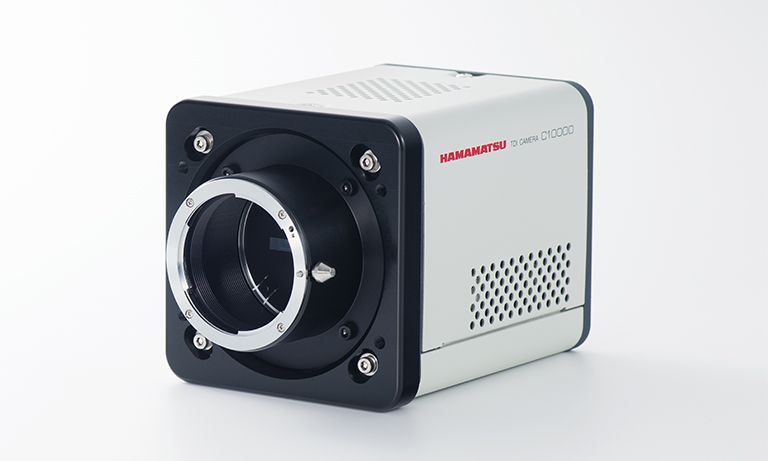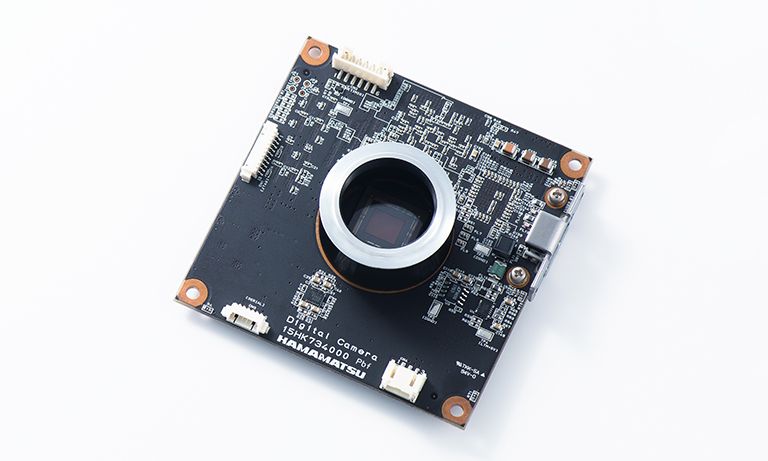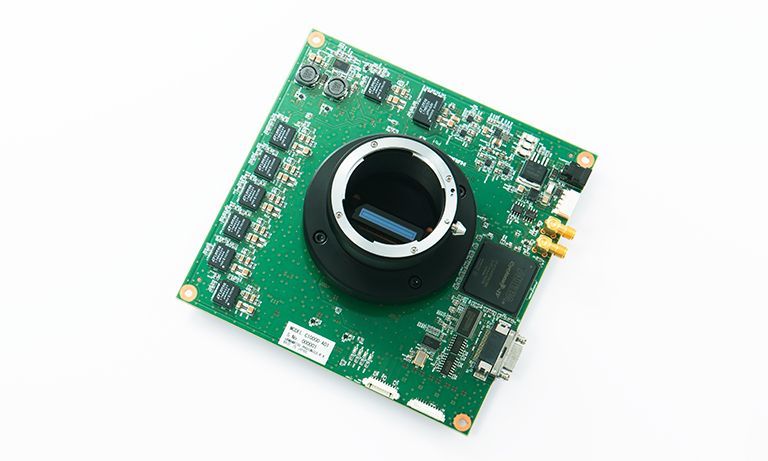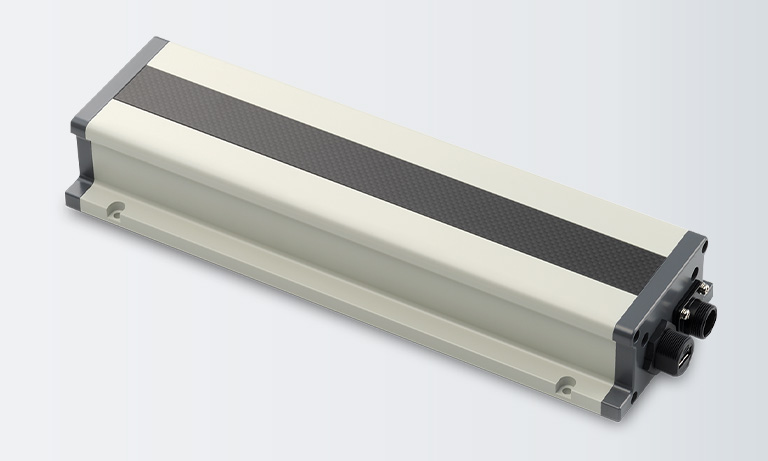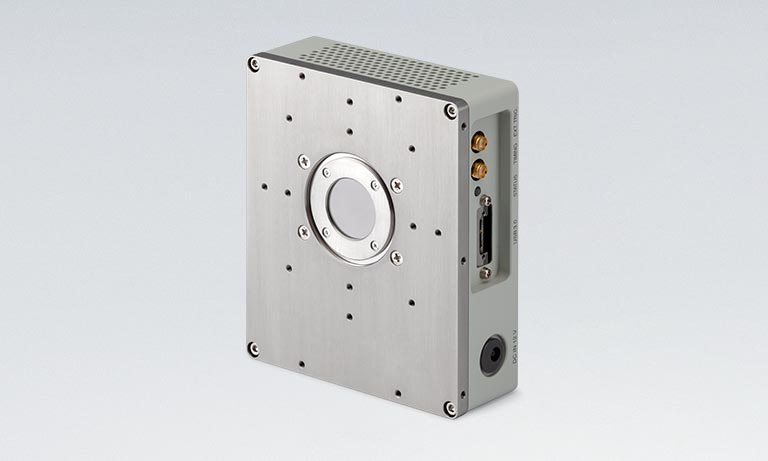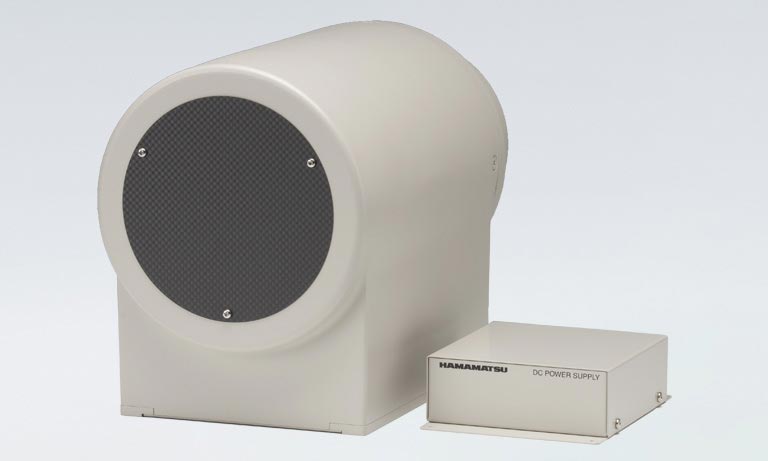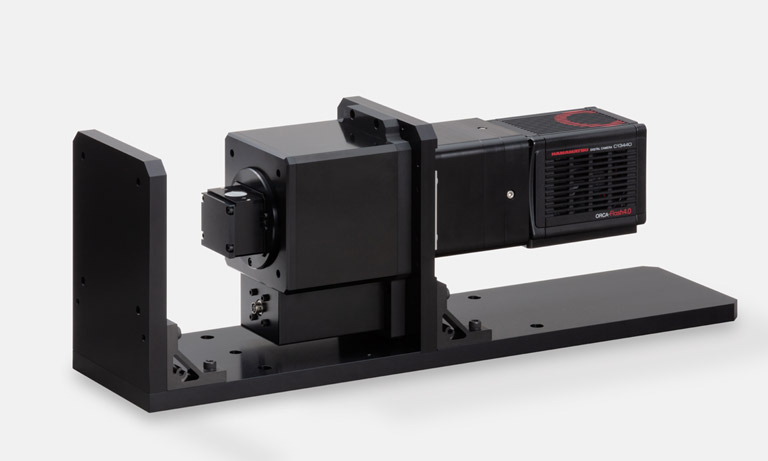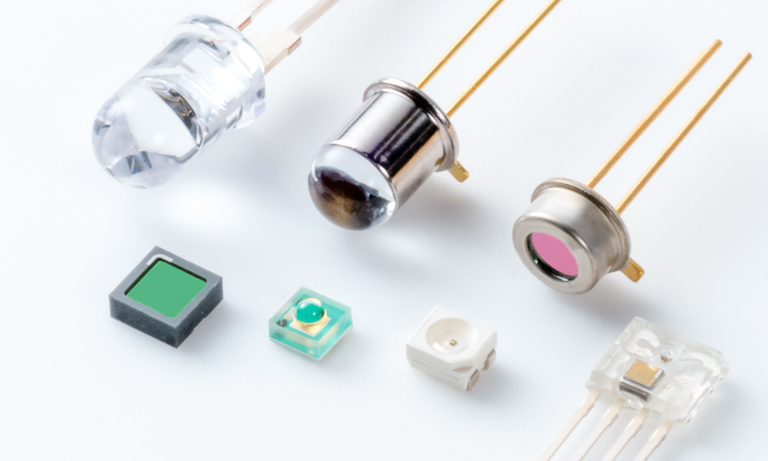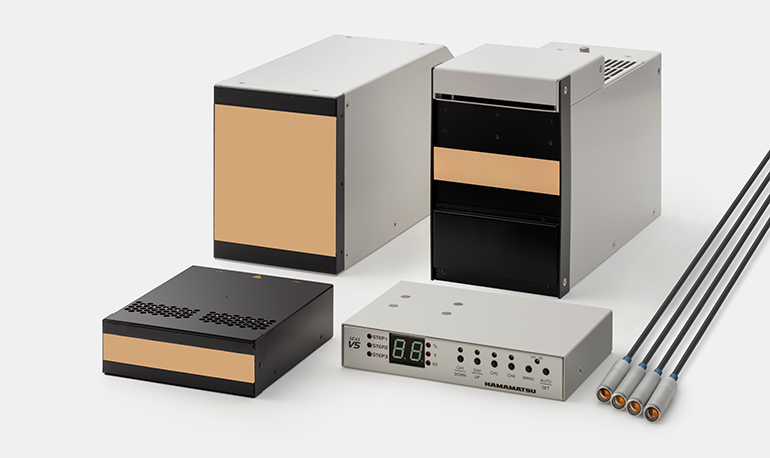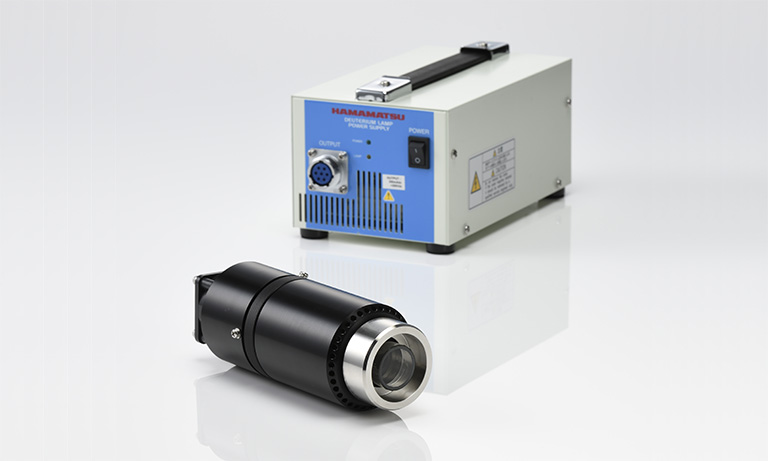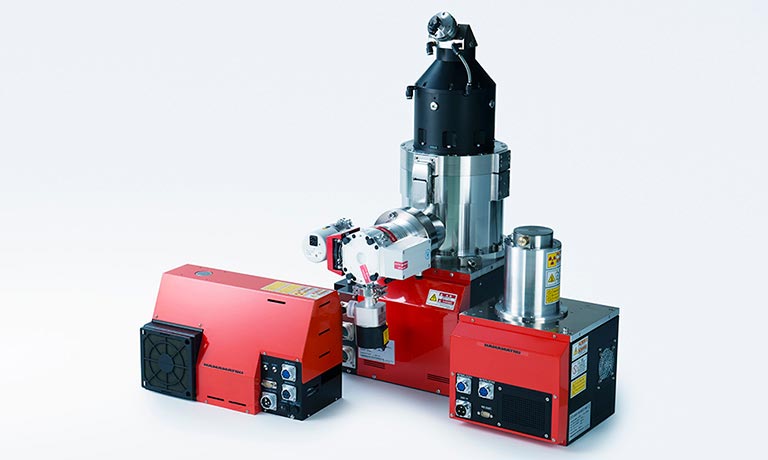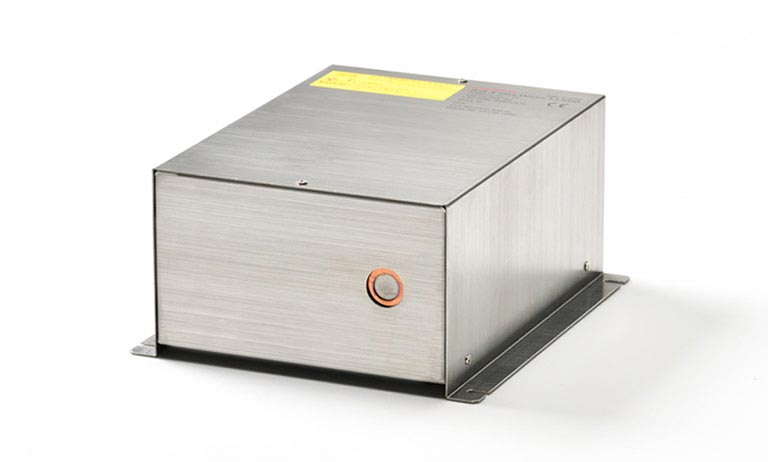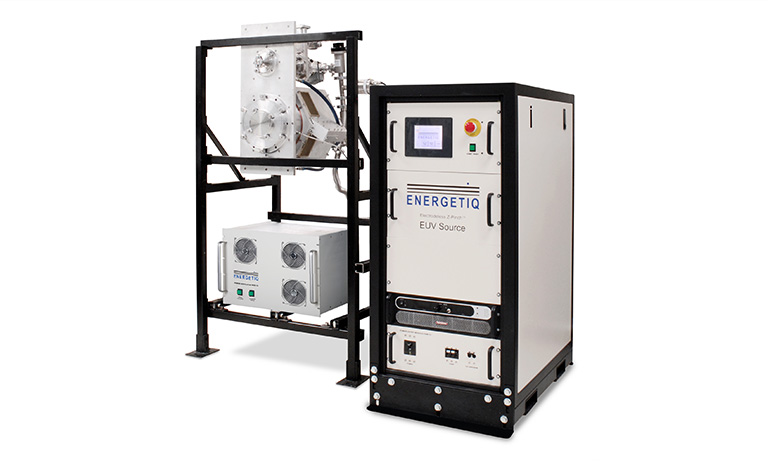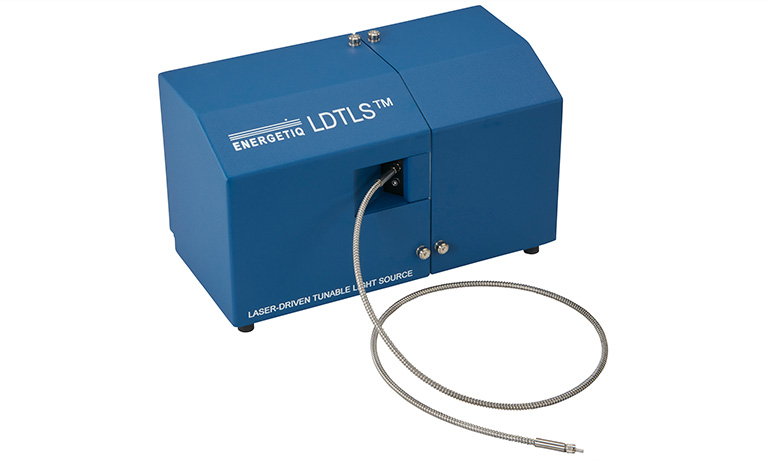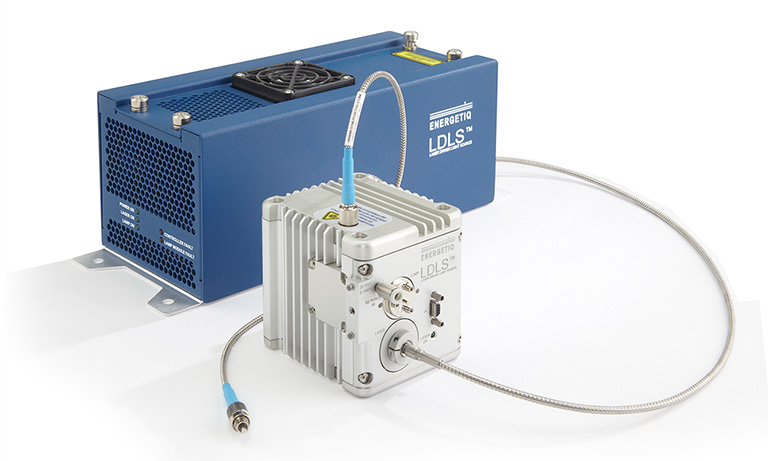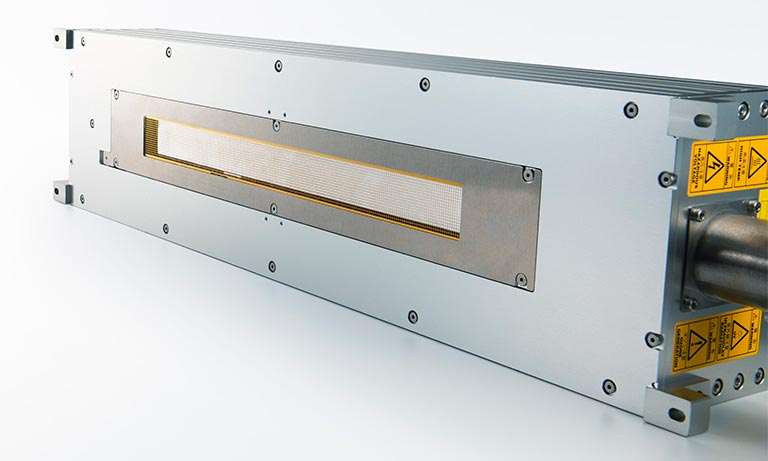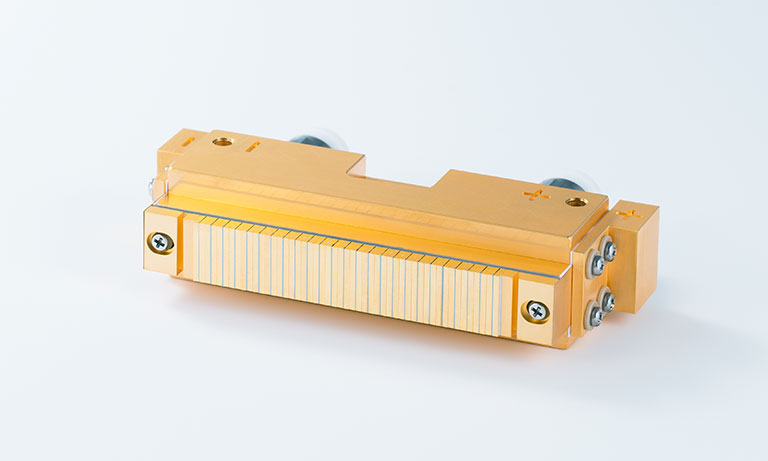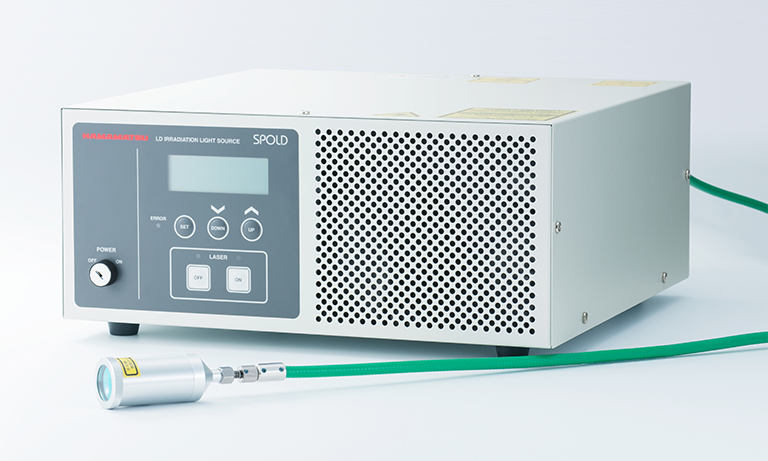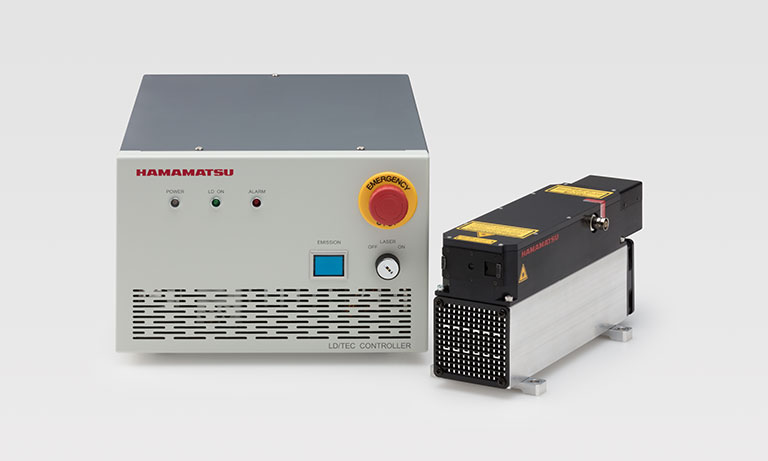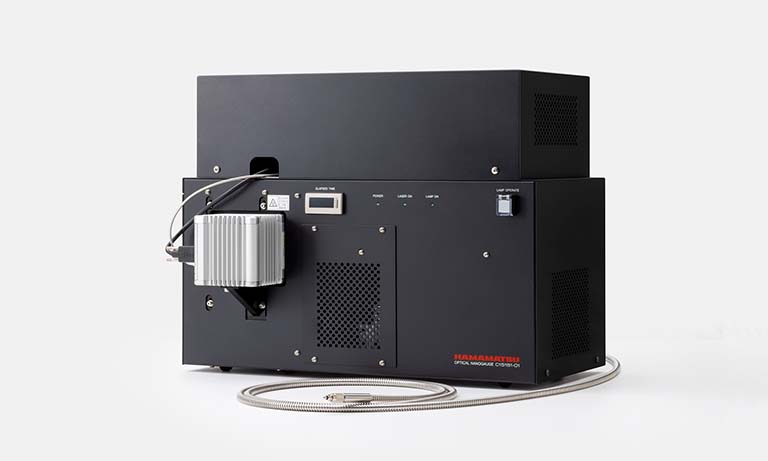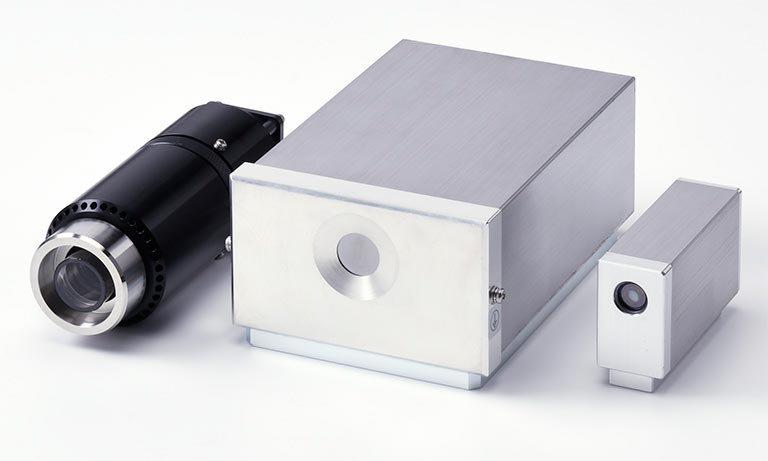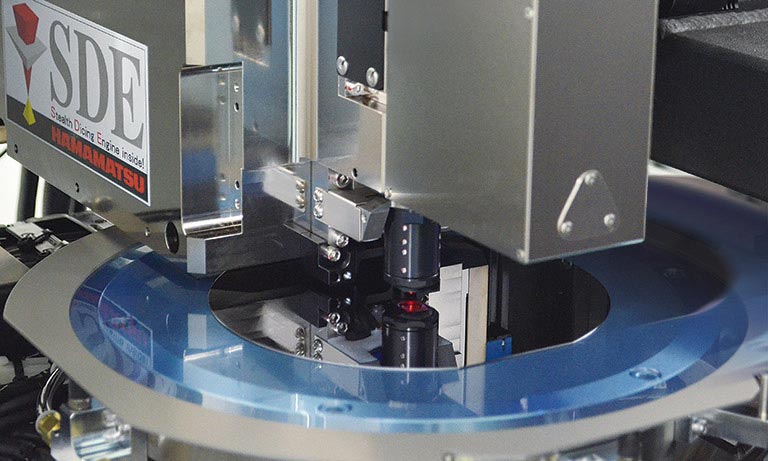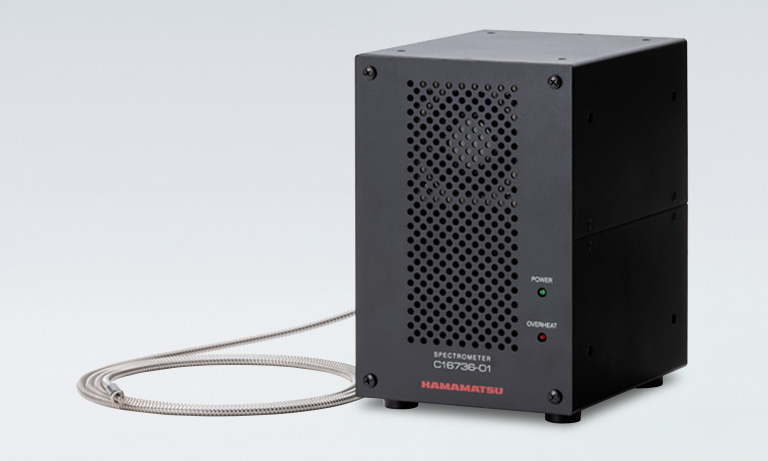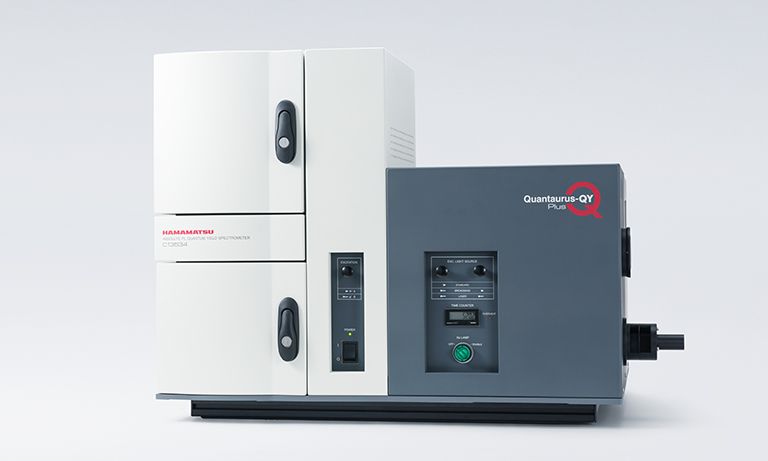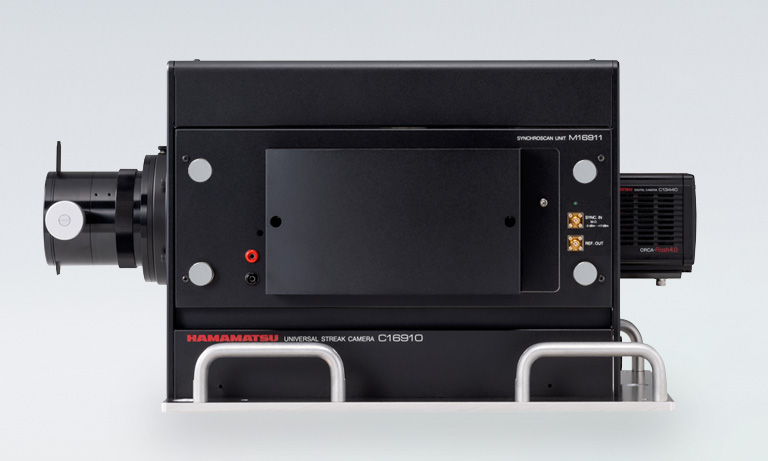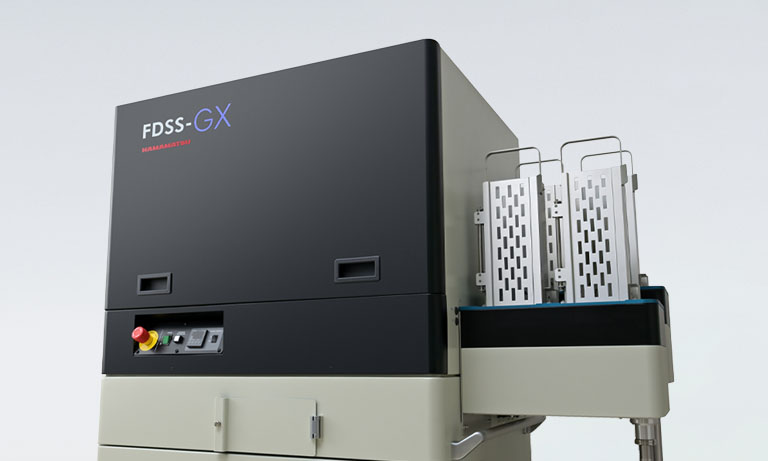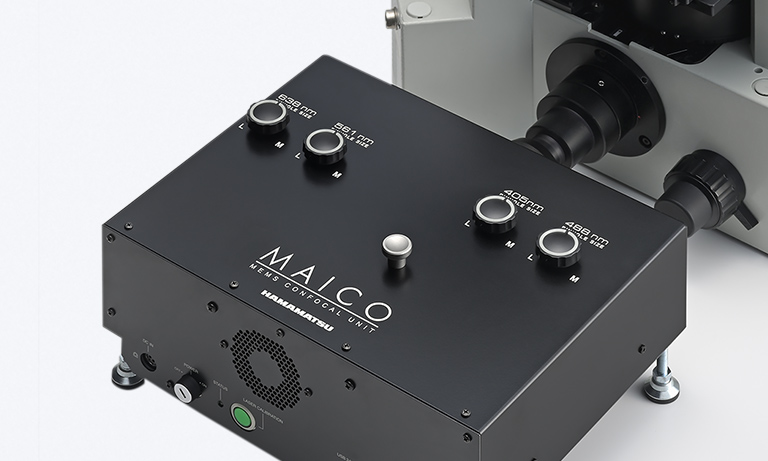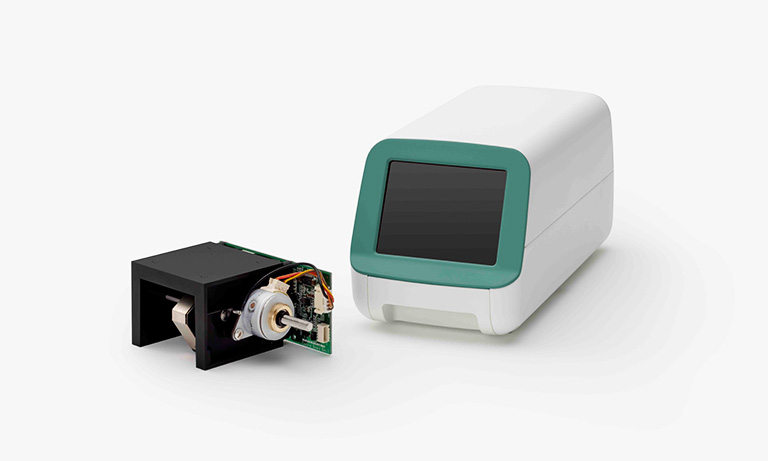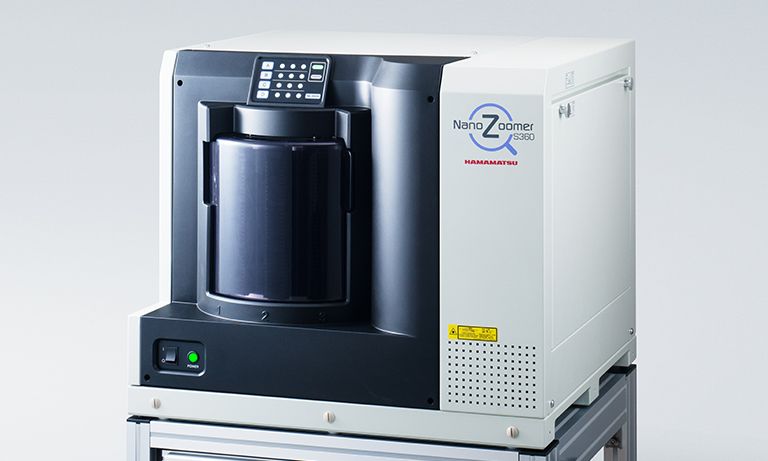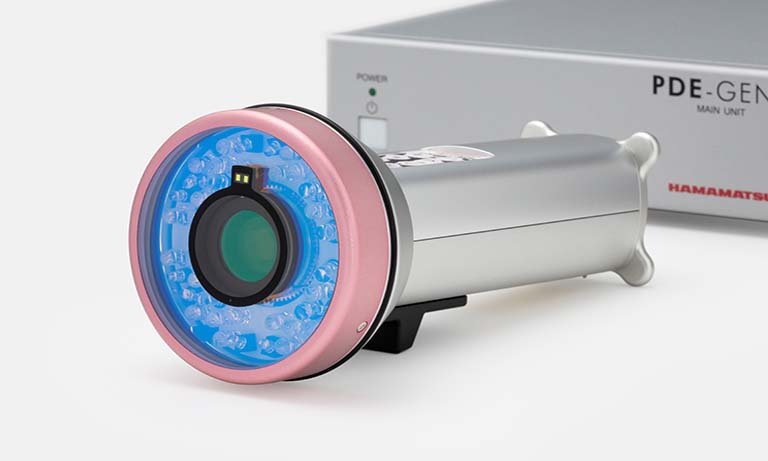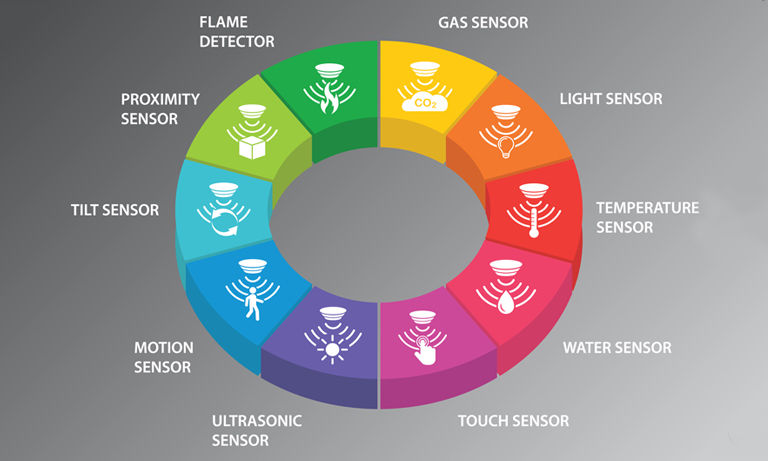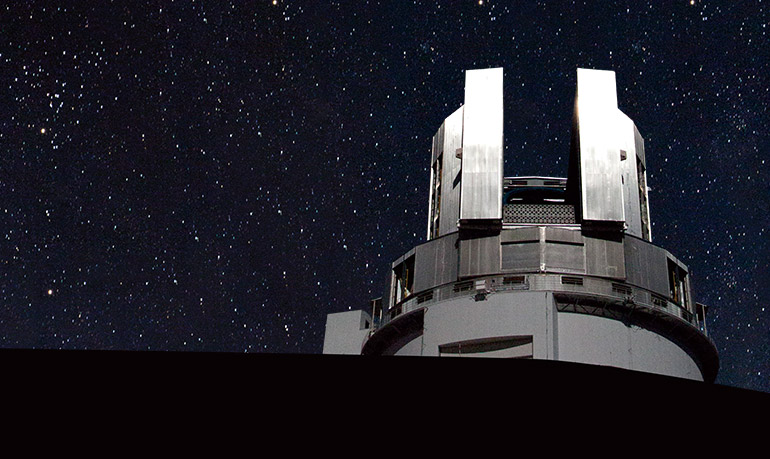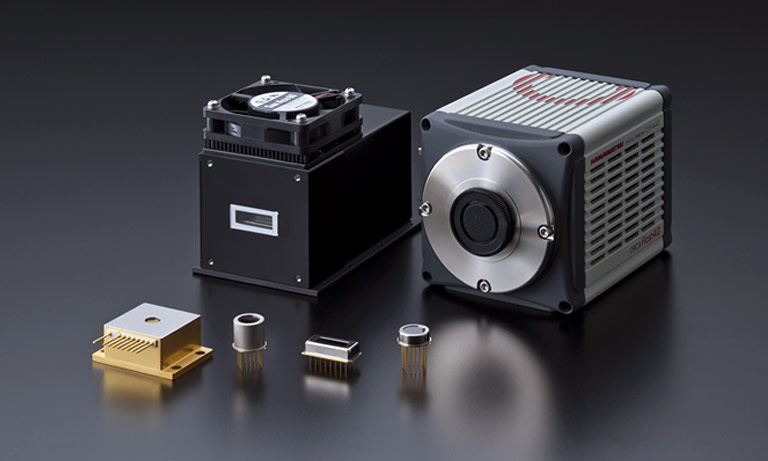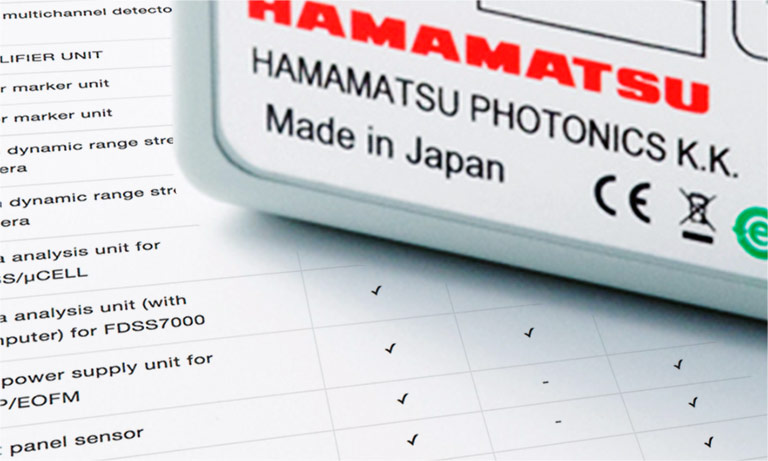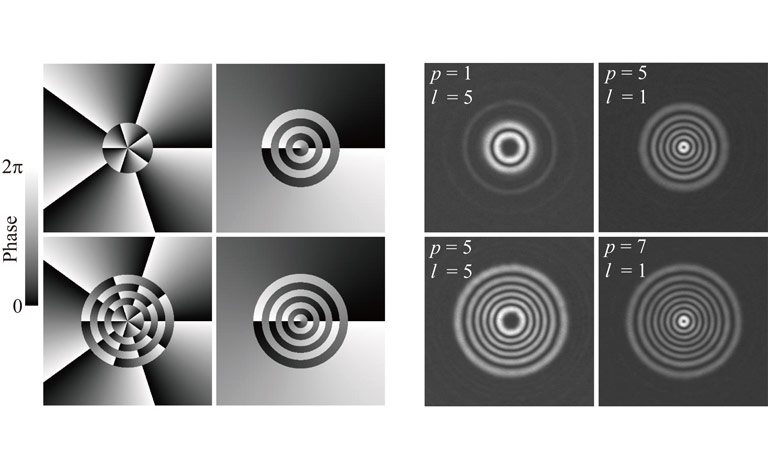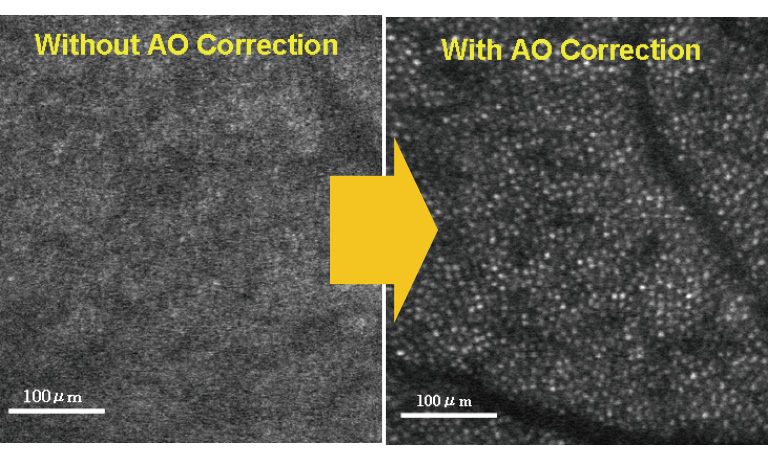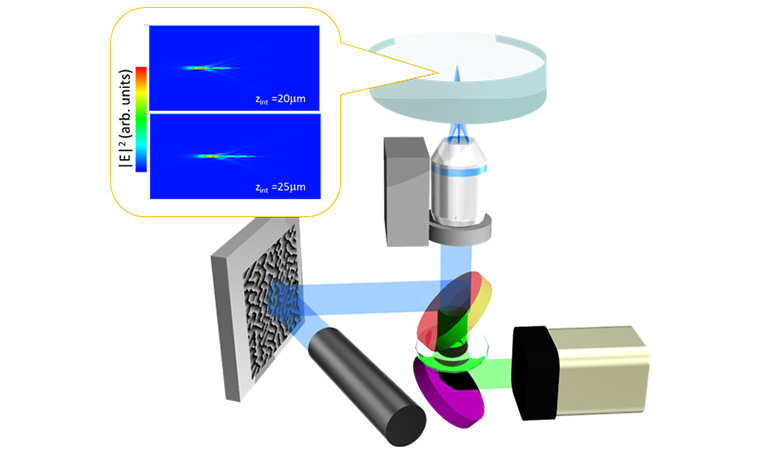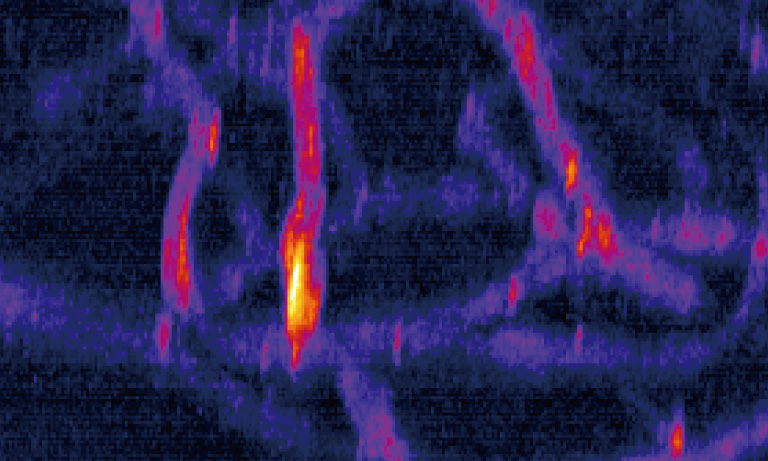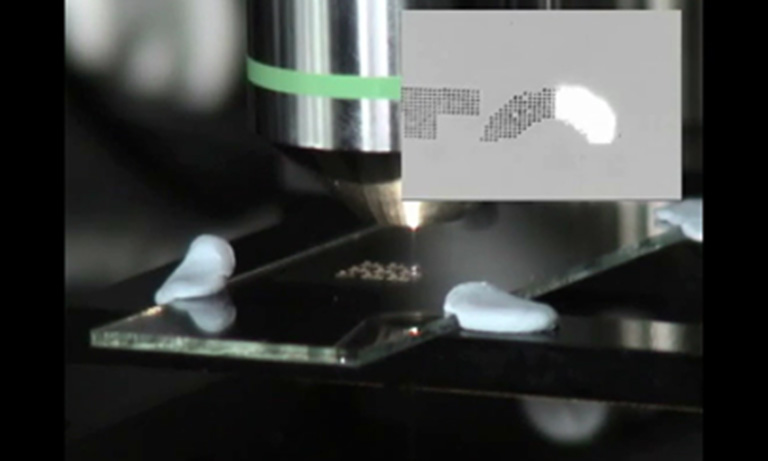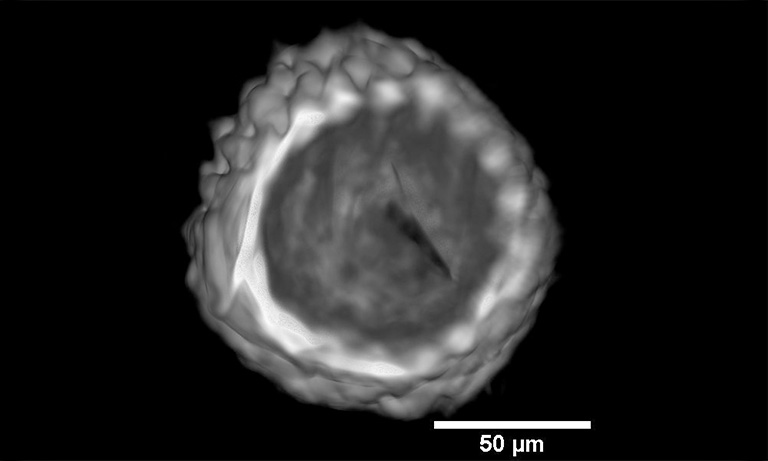United States (EN)
Select your region or country.
Optical information processing and measurement
Optical wavefront modulation is a technique to manipulate the wavefront of light (the spatial distribution of the phase) freely. This technique is an indispensable element in realizing applications to precise laser processing, holographic three-dimensional processing, fundus imaging utilizing adaptive optics, manipulation of minute objects such as molecular motors, three-dimensional super-resolution microscopic measurement inside a biological sample, pulse waveform control. In order to carry out further advanced modulation, we are researching high-speed, high-precision sensing technology and thinking that we can acquire new uses and knowledge by combining both technologies. As a concrete example of this advanced light wavefront control, we have developed a proprietary technology, Liquid crystal on silicon - spatial light modulator (LCOS - SLM) and intelligent vision sensor (IVS) as key devices. We are pushing basic research on industrial application of technology and application of medical equipment.
Adaptive optics (AO) is a technology that directly improve the image quality obtained by measuring the aberration generated inside the optical equipment with a wavefront sensor. For this correction, there are uses such as a deformable mirror that directly changes the optical path length, but in order to correct it to higher definition, we are studying the technology of LCOS - SLM that shifts the phase of light locally. The current major adaptive optical application is in the field of fundus imaging and can obtain high resolution images of the human retina.
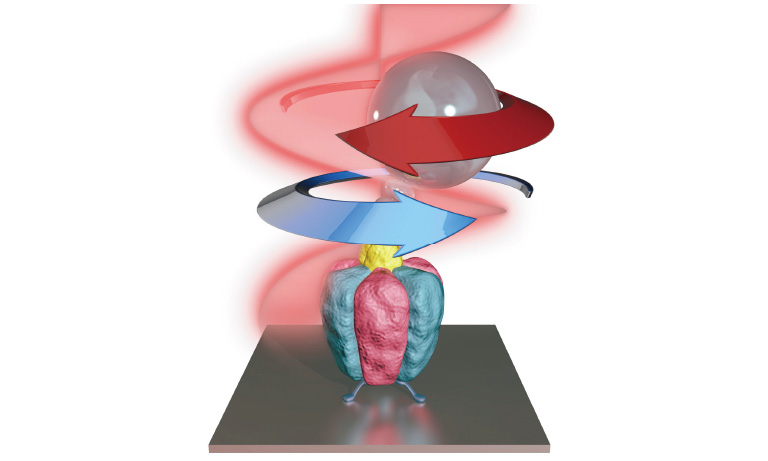
Optical torque wrench
The optical torque wrench is a technique for applying a rotational force to matter by making use of a force of light called the “optical vortex” that is known to have a special property. Advanced optical technology is necessary for obtaining optical vortices, and we have in fact established such high-level technology adequate for generating the optical vortices. Our high-precision optical torque wrench enables controlling dynamics of a single molecule and/or measuring precisely a pico-Newton regime small force generated by the molecule.
We focus on the theoretical calculation and the dynamic control by LCOS-SLM of the point spread function (PSF), which explains the response characteristic of the optical system to the point light source. We need both high-precision optical technology and phase modulation, by advancing technology development and applying it to a microscope, we succeeded in achieving multi-point, aberration correction, multifocal and depth of field extension individually or simultaneously. We are also applying to super-resolution microscopes and nonlinear microscopes to contribute to further enhancement of microscopic observation technology.
By using a SLM, which can precisely control the wavefront of light, various functions such as aberration correction can be realized. We are planning to incorporate the wavefront control provided by SLM into a two-photon excitation fluorescence microscope system. This will allow us to observe the deep part of biological tissues with high accuracy and simplicity. We are working with Hamamatsu University School of Medicine on basic and applied research on such high-precision microscope systems. In the future, we aim to contribute to medical and biological research while collaborating with various universities.
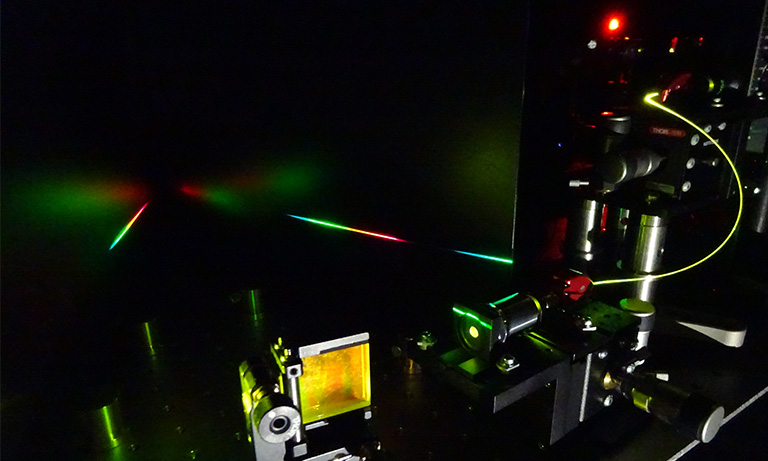
Ultrashort pulse laser waveform control technology
Ultrashort pulse lasers with femtosecond and picosecond speeds are very useful for laser processing and high-sensitivity measurement of cells because the pulse lasers can reduce heat damage to the target. However, the reduction effects are largely dependent on the pulse shape because they induce non-linear processes. Therefore, there is a need for technology that can fully control the pulse waveform shape and interval of pulse train. We have developed a method for modulating the spectral phase and intensity contained in pulsed light with high precision, and aim to create a new waveform shaping technology with a high degree of control. In addition, by promoting research on waveform measurement methods in collaboration with Osaka University, we are working to further improve the accuracy of waveform control.
By splitting into multiple beams diffractively by LCOS - SLM, simultaneous parallel laser processing can be realized and throughput improvement can be achieved. We aim to create high speed, high precision and highly-added value processing technology by studying computer generated hologram calculation and optical designing required to obtain such performance with LCOS - SLM. These allows increasing our proprietary technology of Stealth DicingTM Process in sophistication or direct-single shot laser marking to glass or aluminum cans to be realized instead of conventional ink jet printing system or high speed laser scanning system.
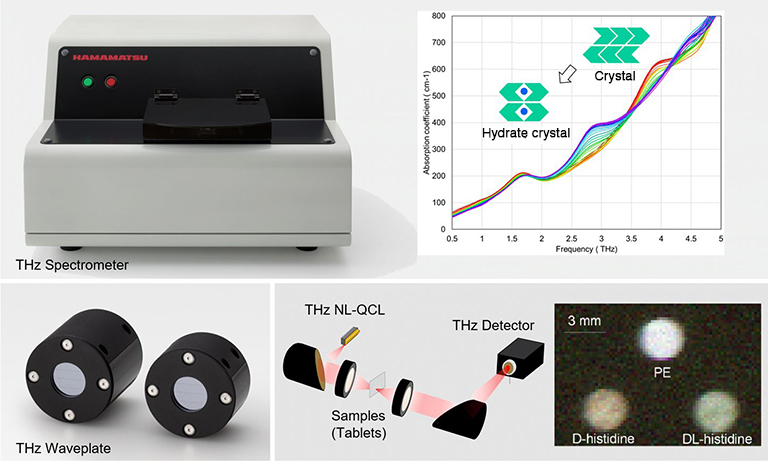
Terahertz waves technologies
Terahertz (THz) waves are electromagnetic waves in region between light and radio waves. Terahertz waves have many potentials because it has properties of both light and radio waves. Terahertz waves are also expected to be used in 6G communications in the future. To explore this field, we have developed devices and systems, such as Si prismatic waveplates for terahertz waves and THz-ATR (THz waves attenuated total reflection) spectrometers that are compact and easy-to-use. In anticipation of the future expansion of terahertz waves applications, we are working on the development of new terahertz devices and application research for drug, food, and material analysis using terahertz spectroscopy and terahertz imaging technology.
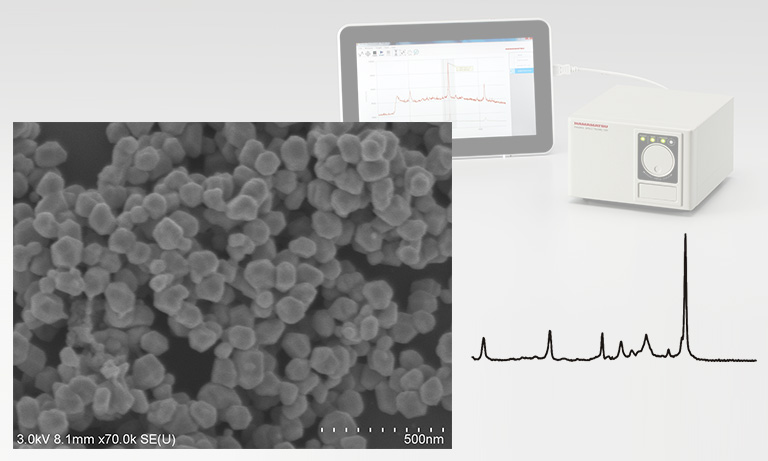
In-situ preparation technique of SERS active nanostructure
Raman scattering spectroscopy is a molecular vibrational spectroscopy, which gives molecular structural information, therefore allows qualitative as well as quantitative analysis. Although Raman spectroscopy is not applicable for trace amount quantification due to essential weakness of Raman signal, surface-enhanced effects by metal nanostructure enable Raman spectroscopy to detect an analyte at a single-molecule level. We developed in-situ preparation technique a SERS-active silver nanostructure based on chemical reduction of silver ion. This technique can be utilized in the scenes what rapidity is needed such as environmental, forensic analysis and threat detection.
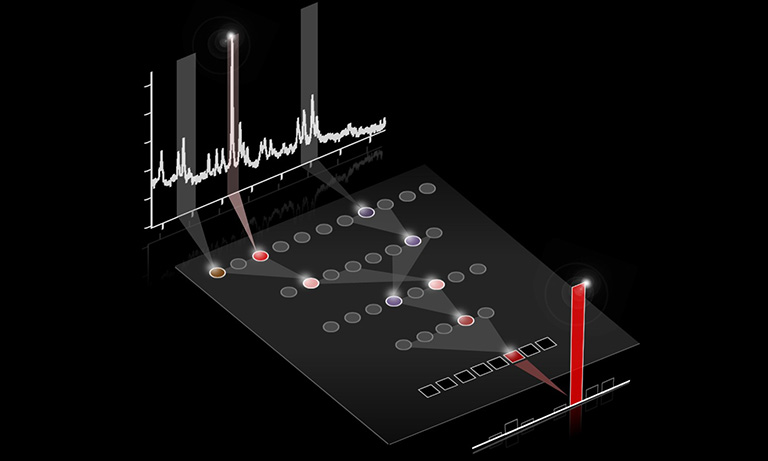
Optical spectrum analysis with deep learning technology
Complicated optical spectrum has many information of molecules included in a measured sample. In general, various spectrum analysis methods (e.x. principal component and regression analysis) are applied to extract usable information from the spectrum. Our company researches and developments novel spectrum analysis methods with deep learning technology for many applications such as high-accuracy spectral discrimination, authenticity assessment, and quantitative analysis of mixed ratio.
Soft X-rays with energies below several keV are useful for observing biological specimens and light element materials since they are well absorbed by materials composed of light elements with low atomic number. We have been developing a compact soft X-ray microscope which enables high-resolution observation of 3D fine structures in a regular laboratory room combining an electron-impact x-ray source and grazing incidence mirror optics. The X-ray mirrors which we fabricate have high utilization efficiency of X-rays and can provide images of different X-ray energies.
- Confirmation
-
It looks like you're in the . If this is not your location, please select the correct region or country below.
You're headed to Hamamatsu Photonics website for US (English). If you want to view an other country's site, the optimized information will be provided by selecting options below.
In order to use this website comfortably, we use cookies. For cookie details please see our cookie policy.
- Cookie Policy
-
This website or its third-party tools use cookies, which are necessary to its functioning and required to achieve the purposes illustrated in this cookie policy. By closing the cookie warning banner, scrolling the page, clicking a link or continuing to browse otherwise, you agree to the use of cookies.
Hamamatsu uses cookies in order to enhance your experience on our website and ensure that our website functions.
You can visit this page at any time to learn more about cookies, get the most up to date information on how we use cookies and manage your cookie settings. We will not use cookies for any purpose other than the ones stated, but please note that we reserve the right to update our cookies.
1. What are cookies?
For modern websites to work according to visitor’s expectations, they need to collect certain basic information about visitors. To do this, a site will create small text files which are placed on visitor’s devices (computer or mobile) - these files are known as cookies when you access a website. Cookies are used in order to make websites function and work efficiently. Cookies are uniquely assigned to each visitor and can only be read by a web server in the domain that issued the cookie to the visitor. Cookies cannot be used to run programs or deliver viruses to a visitor’s device.
Cookies do various jobs which make the visitor’s experience of the internet much smoother and more interactive. For instance, cookies are used to remember the visitor’s preferences on sites they visit often, to remember language preference and to help navigate between pages more efficiently. Much, though not all, of the data collected is anonymous, though some of it is designed to detect browsing patterns and approximate geographical location to improve the visitor experience.
Certain type of cookies may require the data subject’s consent before storing them on the computer.
2. What are the different types of cookies?
This website uses two types of cookies:
- First party cookies. For our website, the first party cookies are controlled and maintained by Hamamatsu. No other parties have access to these cookies.
- Third party cookies. These cookies are implemented by organizations outside Hamamatsu. We do not have access to the data in these cookies, but we use these cookies to improve the overall website experience.
3. How do we use cookies?
This website uses cookies for following purposes:
- Certain cookies are necessary for our website to function. These are strictly necessary cookies and are required to enable website access, support navigation or provide relevant content. These cookies direct you to the correct region or country, and support security and ecommerce. Strictly necessary cookies also enforce your privacy preferences. Without these strictly necessary cookies, much of our website will not function.
- Analytics cookies are used to track website usage. This data enables us to improve our website usability, performance and website administration. In our analytics cookies, we do not store any personal identifying information.
- Functionality cookies. These are used to recognize you when you return to our website. This enables us to personalize our content for you, greet you by name and remember your preferences (for example, your choice of language or region).
- These cookies record your visit to our website, the pages you have visited and the links you have followed. We will use this information to make our website and the advertising displayed on it more relevant to your interests. We may also share this information with third parties for this purpose.
Cookies help us help you. Through the use of cookies, we learn what is important to our visitors and we develop and enhance website content and functionality to support your experience. Much of our website can be accessed if cookies are disabled, however certain website functions may not work. And, we believe your current and future visits will be enhanced if cookies are enabled.
4. Which cookies do we use?
There are two ways to manage cookie preferences.
- You can set your cookie preferences on your device or in your browser.
- You can set your cookie preferences at the website level.
If you don’t want to receive cookies, you can modify your browser so that it notifies you when cookies are sent to it or you can refuse cookies altogether. You can also delete cookies that have already been set.
If you wish to restrict or block web browser cookies which are set on your device then you can do this through your browser settings; the Help function within your browser should tell you how. Alternatively, you may wish to visit www.aboutcookies.org, which contains comprehensive information on how to do this on a wide variety of desktop browsers.
5. What are Internet tags and how do we use them with cookies?
Occasionally, we may use internet tags (also known as action tags, single-pixel GIFs, clear GIFs, invisible GIFs and 1-by-1 GIFs) at this site and may deploy these tags/cookies through a third-party advertising partner or a web analytical service partner which may be located and store the respective information (including your IP-address) in a foreign country. These tags/cookies are placed on both online advertisements that bring users to this site and on different pages of this site. We use this technology to measure the visitors' responses to our sites and the effectiveness of our advertising campaigns (including how many times a page is opened and which information is consulted) as well as to evaluate your use of this website. The third-party partner or the web analytical service partner may be able to collect data about visitors to our and other sites because of these internet tags/cookies, may compose reports regarding the website’s activity for us and may provide further services which are related to the use of the website and the internet. They may provide such information to other parties if there is a legal requirement that they do so, or if they hire the other parties to process information on their behalf.
If you would like more information about web tags and cookies associated with on-line advertising or to opt-out of third-party collection of this information, please visit the Network Advertising Initiative website http://www.networkadvertising.org.
6. Analytics and Advertisement Cookies
We use third-party cookies (such as Google Analytics) to track visitors on our website, to get reports about how visitors use the website and to inform, optimize and serve ads based on someone's past visits to our website.
You may opt-out of Google Analytics cookies by the websites provided by Google:
https://tools.google.com/dlpage/gaoptout?hl=en
As provided in this Privacy Policy (Article 5), you can learn more about opt-out cookies by the website provided by Network Advertising Initiative:
http://www.networkadvertising.org
We inform you that in such case you will not be able to wholly use all functions of our website.
Close
